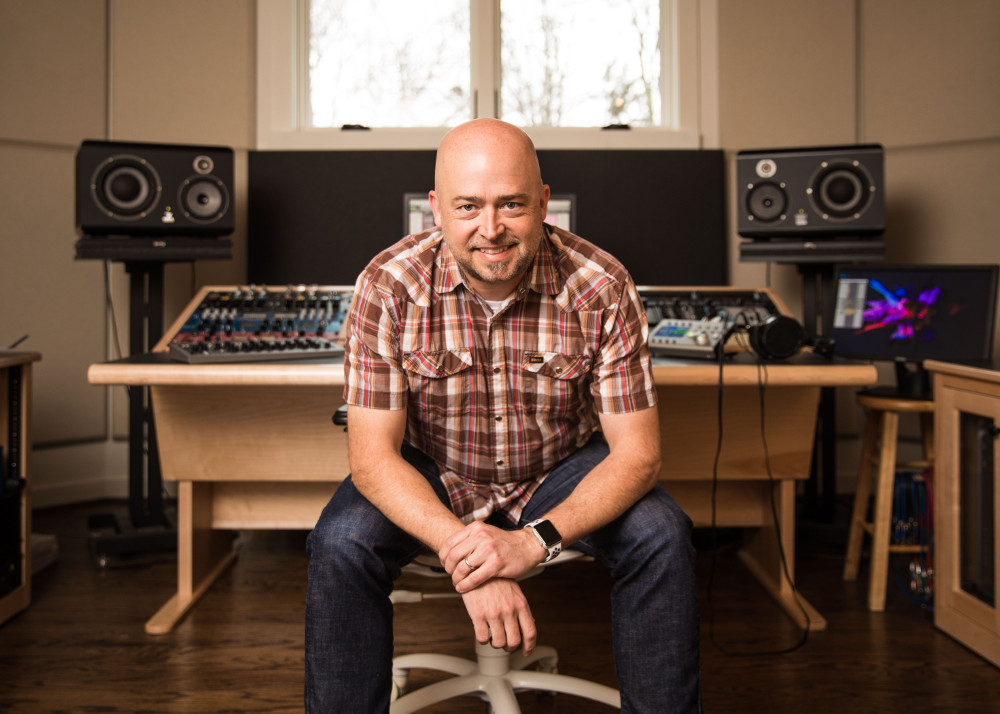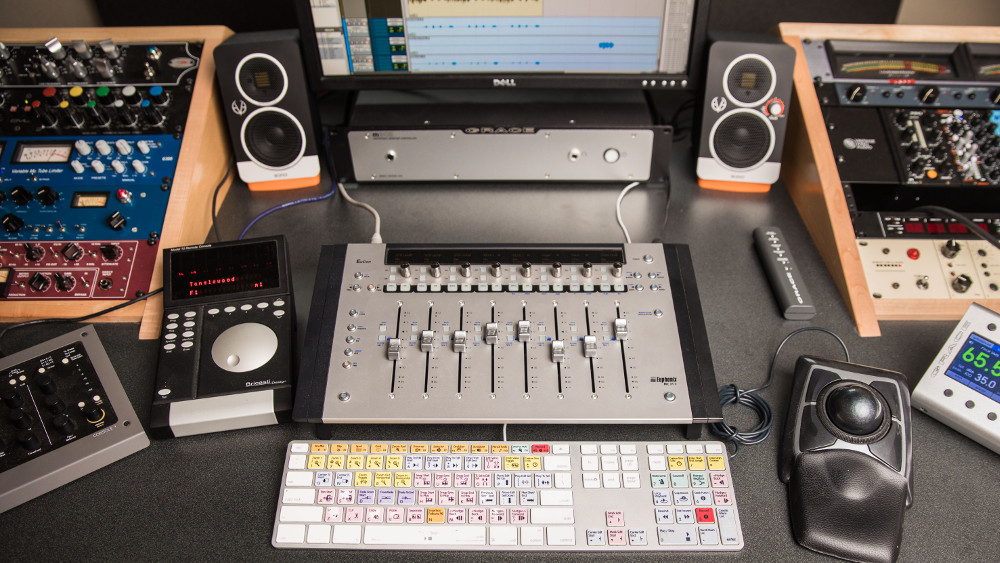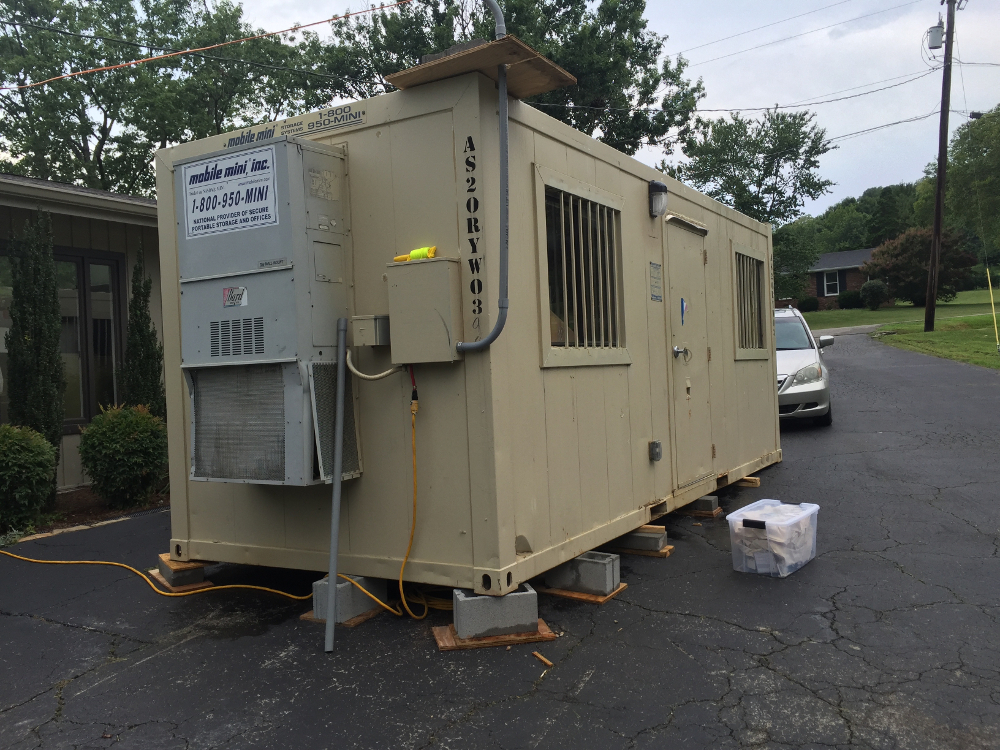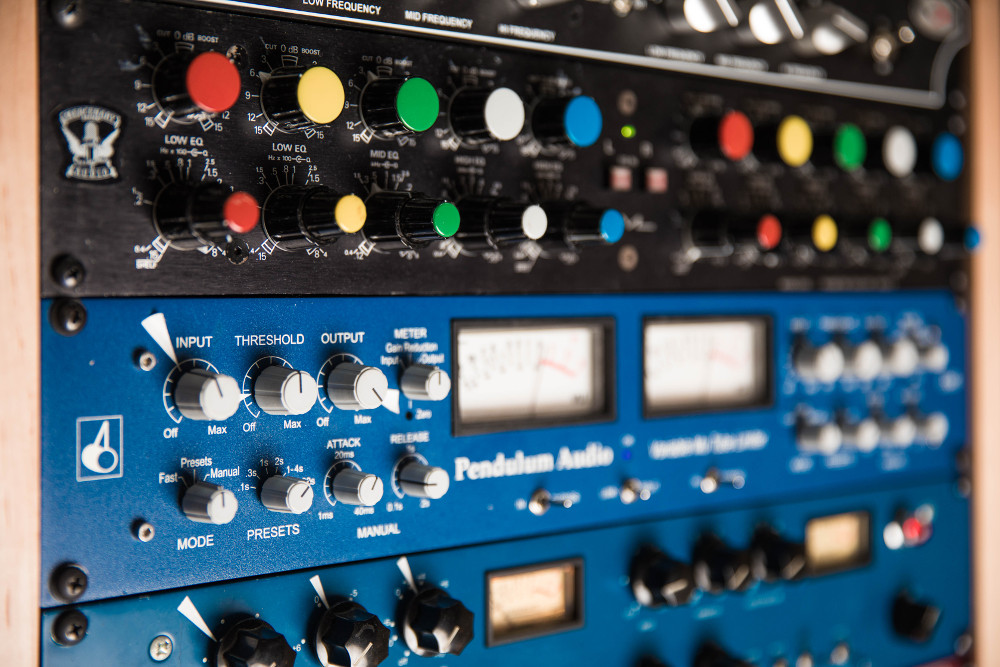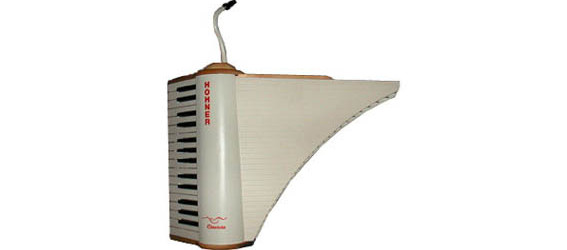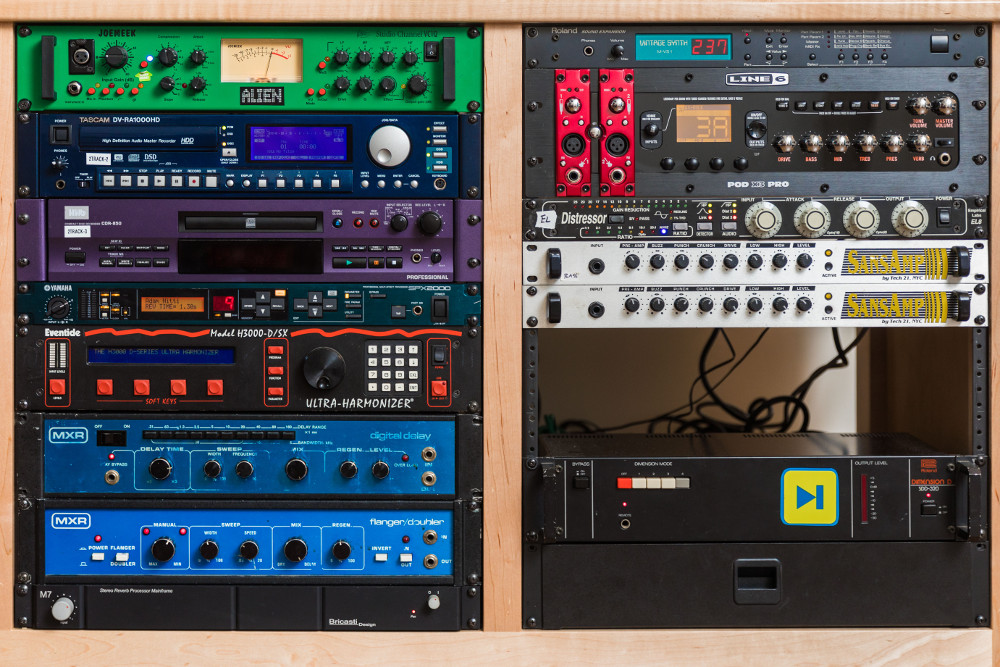Making the Mix Room: Russ Long’s Dangerland — Nashville
It’s all about balance.
But when it comes to Nashville mixer Russ Long’s new space Dangerland, we’re not just talking tone – it’s about life/work. Putting together his first new studio in two decades, Long was convinced he could get his mixes even better, while working even closer to home.
It wasn’t always easy, but with some careful planning it looks like Long has indeed got it all. Now his new facility not only boosts faster workflow and a sharper sweet spot, but is directly connected to his home and family – but with complete separation.
A prolific mixer in Nashville’s ultra-competitive scene, his credits range from Wilco, Dolly Parton, and Sixpence None the Richer, to big films like Girl Interrupted and She’s All That. But how did he manage to keep on growing that list nonstop even when he was in between studios? See how an innovative brainstorm – and admitted eyesore – kept his ears in action every step of the way.
This “Making the Mix Room” has plenty of other go-to tips from a top audio pro. How did Long self-design his new room and give it the optimal acoustic treatment – including a gamechanger for maximizing his monitoring? Also get a taste of his stereo buss recipe, and discover the arsenal of plugins that shine in his setup. Plus, see how Long shrank down his patchbay when he made the move, and revved up his signal path in the process.
The mixes of his hitmaking clients are perfectly safe at Dangerland. Long tells you why:
Mixer Name: Russ Long
Location: Nashville, TN
Nashville Now: It’s crazy because I’ve heard so many things about the music business slowing down in other cities, but Nashville is as busy as ever.
I don’t spend nearly as much time tracking as I did a decade ago but there’s more mix work than I can handle. There’s also way more independent work than there was when I got started. Funny enough, the bands that make the indie records are the ones most passionate about their music most of the time. Label bands spend a lot of time second guessing radio program directors and marketing plans where the indie bands just want to make an awesome album. It’s really refreshing.
When I first moved to Nashville the rest of the country thought all we did was make country music here, but there’s so much more and I think the rest of the world realizes that’s the case.
My Mix Philosophy: I consider myself to be a song-oriented mixer. It’s a pretty easy way to work when you’re dealing with great songs, which I fortunately am most of the time.
Interestingly enough, when I’m building my mix I usually start with the drums and then add the vocal after that. I like to build everything around the vocal. I don’t care how great the part is, if it fights the vocal, it doesn’t work.
Clients/Credits: Back in the 90’s I had the opportunity to work on some great rock and pop albums. Wilco’s Summer Teeth and the self-titled Sixpence None the Richer are probably the two that I’m the most proud of from that time period.
The Sixpence None the Richer album had the songs “Kiss Me” and “There She Goes” on it. “Kiss Me” was number one in nine different countries, which was pretty exciting. Over the years I’ve been able to work on a ton of great stuff from Dolly Parton and Amy Grant to Jim Brickman and Newsboys. I’ve done a lot of film soundtrack work too. This includes working on the soundtracks for Girl Interrupted, How To Lose A Guy In 10 Days, Hannah Montana: The Movie, and She’s All That.
My favorite was probably The Sapphires, it’s a movie about an all girl band in the ‘60’s and I recorded all of their songs for the film. The band got better as the film progressed so the musicians actually had to play like they weren’t as good for the tracks that appeared early on in the film. It was a lot of fun.
I’m currently mixing projects for The Slang, this killer power-pop band out of the DC area and Kat Milk Blu, this great funky rock band.
Room Evolution: When I built my previous studio, the Carport, back in 1994 the music scene was an entirely different place. I had to have a lounge because there were label people and bands hanging out all the time.
I rarely have people come by these days so my entire space is focused around my workflow and how it interacts with my family life. I have three kids and even though I can’t always spend tons of time with them, I get to see them multiple times every day, which is great. I see them off to school in the morning and I’m waiting for them by the door when they get off the bus. I have dinner with them and put them to bed too and I’m still able to work pretty much all of the time.
Dangerland is a new construction and while it’s connected to my house, it’s a separate wing with a dedicated entrance. While it feels like completely isolated from the house, I can still go from living space to work space without having to put on my shoes. I love it.
Studio crossover: I had planned on having a 30-45 day overlap time between my old space and Dangerland. I wanted to be able to go back to the Carport and check critical mixes while I was adapting to the new room.
Of course there are all kinds of crazy stuff to take into consideration when you’re building a new space including, codes, inspections, bank loan approvals, contractor scheduling and tons of other stuff and the way it worked out, I moved out of my old space the same week they started the six-month Dangerland construction.
This turned into quite an adventure. I didn’t want to temporarily move into a new building so I ended up renting a construction trailer, the kind that building site foremen use for an office on big construction jobs, and setting up my mix room in there. I put a bunch of acoustic treatment up and ended up with something that was workable. It had bars over the windows so my kids called it the jail cell. I’m sure you can imagine the looks they got when they told their teachers they had to go to the jail cell to get dad’s help with their homework – ha!
It took me twice as long to get anything done in there because I was constantly second-guessing what I was hearing but I was right by the Dangerland site so I was able to keep my eye on the construction from day one, which really paid off. The only downside was that after making a living working in the jail cell for six months, I had the challenge of having to convince my wife that we really did need to spend all of that money on an awesome studio!
Critical Acoustics: I’ve known Eric Smith from Auralex for close to ten years. I had been using the MoPAD speaker decouplers for some time and loved them. He wanted me to try out his new ProPAD [speaker decouplers] and I couldn’t believe the difference they made in how my speakers performed. We ended up spending a bunch of time together at a couple of audio conferences and then he came by my old mix room, listened a bit, and gave me a couple of recommendations. I made the minor tweaks and it made a world of difference. He really knows his stuff.
When it came time to build my new space I didn’t want to get into the expense of bringing in a studio designer so I opted to design the layout myself. I ended up implementing all of the acoustical build recommendations in Eric’s Acoustics 101 book. The walls are constructed with double drywall and hung using Auralex’s RC-8 Resilient Channel system. I floated the floor with the U-Boat Floor Floaters. The floor walls and ceiling all utilize the Auralex’s SheetBlok [sound isolation barrier] and Mineral Fiber [insulation]. Eric designed the room’s acoustic treatment that includes a custom cloud and wall treatments built from Auralex ProPanel absorption panels and DST-LENRD bass traps.
Key Gear:
Console My old space had a Langley Big desk, which was great for its time but since Avid revamped the Pro Tools in the box summing a couple of versions ago, I’ve been happy keeping my summing in the box.
My console pretty much turned into a damn expensive keyboard stand with a high electricity bill so I decided to axe the console in my new room and go with a killer monitor controller which was a great decision. I ended up going with the Grace Design M906 and I couldn’t be more pleased. It has a built-in phono preamp, audiophile grade converters, an unbelievable headphone amp and a completely transparent signal path. It’s amazing and is a real game changer as far as monitoring goes.
DAW Pro Tools HDX is my main DAW. I love it. To me working in Pro Tools is like playing an instrument. I do spend some time in Studio One Pro and Nuendo but Pro Tools is it 90% of the time.
Outboard/Hardware/Tape Either my Alta Moda HIPPO [stereo VCA compressor] or Pendulum 6386 [tube limiter] usually ends up on the stereo buss. Both are fantastic and they are totally different. I have a Bricasti M7 that is my primary reverb. I love it. There’s not a plug-in out there that can touch it.
I love spring reverb and I have a bunch of them too. The Demeter Real Reverb D is probably my favorite but I still get a lot of mileage out of the Accutronics AccuVerb and the Master Room XL-210. The Roland RE-501 Chorus Echo has a nice spring verb in it too. I’ve been using the Focal SM9 monitors since they came out and I still love them.
Plugins I’m using Waves, Softube or Universal Audio plug-ins the majority of the time. All three of these companies are amazing.
As far as reverbs go, I can’t live without the Waves Abbey Road Plate. I typically use the Waves SSL or Softube’s Trident A-Range to EQ acoustic instruments and vocals and the Universal Audio Neve 1081 on electric guitars and drums. If I need something more precise, I use the Waves Q6. I use Soundtoys EchoBoy a lot along with Line 6 Echo Farm and Waves H-Delay. Waves’ H-Comp, dbx-160, Renaissance Compressor, Renaissance DeEsser, Renaissance Vox, Renaissance Axx and C6 all get used a bunch as do Softube’s Abbey Road RS127 & RS135, Summit Audio Grand Channel and Tube-Tech CL 1B.
Instruments I’m not much of a musician but I’ve collected a bunch of stuff over the years that get used on a ton of the records I make.
Since I work with a lot of young bands, I’ve accumulated instruments that generally complement their typical setups. Every band has a couple of great electric guitars but they usually don’t have a 12-string so I have a killer Jerry Jones 12-string guitar. Hollow body basses are rarely right for a song but when they are right, nothing can touch them. I have a 1960 Gibson EBII Bass Guitar that is amazing. My dad bought it new in 1960 and I couldn’t live without it. I also have a great Taylor 514-CE, a 1980’s Hagstrom hollow body and a few other guitars. I have a few dozen pedals as well.
I have an old Ludwig green Vistalite drum set that I got in the 9th grade that I’ve recorded a bunch. The kick drum sounds fantastic and the snare is really unique. I have four or five snare drums that I usually drag to tracking sessions. I’m not a big drum sound replacement guy, I’d rather get the right sound during tracking. This makes for a more inspiring recording process for everyone involved. The most unique instrument I have is a Hohner Claviola. It’s a crazy instrument that plays like a melodica but sounds like an accordion. I bought it at a pawn shop in Germany and it’s the only one I’ve ever seen.
Assorted Secret Weapons One of my favorite pieces of the last decade is the Moog 500-series Analog Delay. It’s all analog but it has MIDI in and can be recalled and automated via a plug-in. It truly is the best of both worlds and it sounds wonderful. I don’t do much recording in my room but when I do I usually use the Retro OP-6 mic pre. It sounds unbelievable.
For Example: Dangerland’s debut project was a live David Liebman album. Dave is one of the finest saxophonists ever. He was in Miles Davis’ band in the ‘70’s and his all-star band — which included Jeff Coffin, Victor Wooten, Chester Thompson, Chris Walters and James DaSilva — played the classic Miles Davis album On The Corner. I multi-tracked the performance and then mixed it right after moving into my new space. It’s going to be released sometime this spring and it turned out fantastic.
The range of music I work on is really broad. I love that. It really keeps it interesting. I’ve been doing this for almost three decades at this point and I don’t think I would have lasted nearly this long if it was the same thing day after day. I can’t believe it but I still love it as much as I ever did.
The projects that have come through Dangerland’s door have stylistically run the gamut. Recent examples include JJ Heller’s pop song “Don’t Lose Heart”:
And Sandra McCracken’s “Steadfast” from her live DVD. It’s really been exciting.
One thing that I’ve been doing a lot when I mix is creating a separate band and vocal buss and compressing them independently then combining them and compressing them again. I feel like it helps glue the band and the vocals together in a really musical way. Although it wasn’t mixed at Dangerland, the song “Bull” from Waterdeep’s self-titled album is a great example of how well this works:
Letting the Light In: I’ve spent too much of my life working in dark control rooms. I have to have natural light.
I have a double window on my front wall that let’s just the right amount of light in. Eric Smith’s acoustic treatment design included panels to cover the windows to completely eliminate any reflection. I ended up configuring these two panels so they are removable and I’ve ended up using them in my recording space to cut down on reflections. I can move them back to my control room fairly easily if I’m working on something ultra-critical but I’ve decided that the minor acoustic trade-off is worth keeping my sanity!
Patchbay Planning: A lot of people seem to be working completely in the box these days so patchbays aren’t even a necessity. I can’t imagine not having a patchbay: I had five 96-point bays at the Carport but I had everything available via the bay. That console had over a hundred inputs and there were inserts on every channel too so it was pretty crazy.
This time around I wanted the ability to patch all 32 of my mic inputs. I have 16 in the main room and 8 input panels in two other rooms. I opted to hardwire the effects to my I/O this time around. I had 30 or 40 patch cables in my old studio that integrated my effects into my Pro Tools I/O. It totally messed me up when people changed them and it took forever to get them all patched correctly.
I’m using the 32 I/O Lynx Aurora(n) and I have the first 16 channels for recording and the last 16 channels are used for effects I/O. I use the digital I/O on my old Lynx Aurora 8 for digital integration, which at this point is the Bricasti and an SPX 2000 that I still use a bunch.
So You Want To Be A Better Mixer: One of the best things I ever did was go to the mastering sessions of projects that I mixed as often as possible. A mastering engineer can be your best source of feedback – both good and bad.
I was fortunate to get to know the legendary mastering engineer Hank Williams early in my career and he gave me great feedback regarding my mixes. He was always up for telling me what I did right and what I could have done better. That probably helped me more than anything else. Bob Ludwig mastered a few projects I mixed early on as well and he also gave me some great feedback.
— Russ Long, Dangerland, Nashville
Please note: When you buy products through links on this page, we may earn an affiliate commission.







